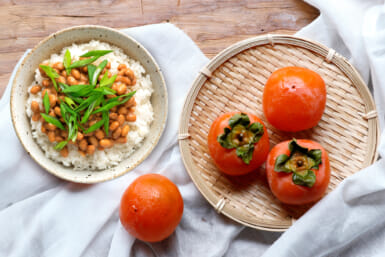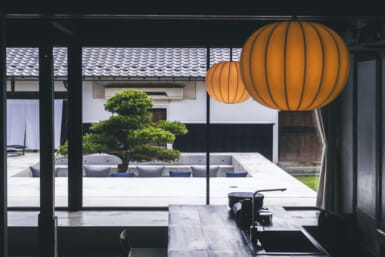OK, readers: What is ‘ethnic food’ to you?
I have often wondered what “ethnic food” was. I know that “ethnic” means. At least know the dictionary definition. But I don’t think it quite fits the term.
The dictionary definition applicable is “designating or of any basic divisions or groups of mankind, distinguished by customs, characteristics, language, etc.” That’s an umbrella under which many things can huddle. In that sense just about every cuisine can be considered ethnic.
The question hit me again recently, when I was munching on bulkoki, kimchi and other tasty tidbits at my favorite Korean restaurant. Was this ethnic food? I wondered. It certainly was under the dictionary term. It is the food of a basic group of mankind, the Koreans. But if it is, don’t all cuisines qualify?
What about regional dishes, if the cuisine itself is ethnic? Every well-developed cuisine has its regional divisions. In France you find Burgundian; Lyonnais, Alsatian, Bordelais, a whole slew of them. Look at China. How many regional and subregional does it have? The same goes for Italy, Germany, India — you name it. If it has any age, it has its subdivisions. Would they be called “subethnic”?
Though that seemed a logical analysis of the problem. I had a feeling I was off the track. For one thing, my image of ethnic food was different. What I saw when I thought of ethnic food was comestibles wrapped in vine leaves. Middle East, that was it. But the image was vague.
I recall looking for a restaurant in London’s Soho district with a friend. We were on one of those pleasant restaurant safaris that sometimes bag a prize. We saw a Greek restaurant, and he said, “Let’s go ethnic.” Greece, though a part of Europe, is really a part of the Middle East in its present-day culture, reflecting years of close association and Turkish domination.
As I was hesitating, my tastebuds not quite ready for leaf-wrapped food, I saw an Indian restaurant and suggested we go Indian ethnic. “That isn’t ethnic,” he said.
To him the food of Greece and Middle East countries obviously represented ethnicity. According to him, then, Korean food would not qualify. But I still did not quite know what he meant by “ethnic,” as I failed to ask him to define the terms. Lunch was uppermost in my mind.
I had a chance to find out at another time when I was talking about various cuisines with someone who knew his food. I asked what “ethnic” meant to him.
“Chitterlings, black-eyed peas, corn pone and watermelon.” he said.
“Wait a minute.” I protested. “That’s not ethnic. That’s soul food.”
He shrugged. “Then I don’t know what ethnic is.”
Up from Roppongi Crossing towards Shibuya there is a record shop called Wave, where I buy my CDs. On the third floor is a section labeled “Ethnic and Jazz.” I decided to go there and find out what ethnic music was. Perhaps that would give me a clue to ethnic food.
It was of no help. The sales clerk told me that ethnic music was African and Mexican. Though I have been to Africa many times, I don’t remember eating anything that was not a derivative of European cuisines. For the Europeans, in dividing Africa into colonies, had imposed their food on the native kind. Mexican? It was as ethnic as Indian and Korean and, where it wasn’t European-derived, just as spicy.
I finally decided to go to Millard H. Alexander, the publisher of The Weekender, a storehouse of Americana.
There was no doubt in his mind. “Ethnic food,” he said, “has to be something wrapped in grape leaves and that means Greek. Turkish. Armenian and Middle Eastern.”
Since that was what my vague image told me, I accepted it. Does anybody have any better ideas?
Now let me tell you about my favorite Korean restaurant. It is Ju Ju and it stands on the left-hand corner of Nishi-Azabu Crossing directly across from Hobson’s ice cream parlor.
Though the following statement may bring protests from Korean readers, I must say that I find Korean food in Tokyo better than that in Korea. I have been to Korea many limes, first as a correspondent in the Korean War and then when I visited there as part of my territory when I was active with Pan American.
The first time I stayed in the correspondents’ barracks in Seoul and ate U.S. Army cuisine. In the second case, the Korean restaurants where I was taken served not very good beef in bland sauces. It may well be that the Korean staff took me to places they thought suitable to my bland American tongue. If so, they did their cuisine a disservice, for they gave me a low opinion of Korean food in Korea.
The spiciness of Ju Ju’s food is just right for my palate, and l like its prices. The most expensive item on the menu is small slices of roast beef (on the menu, ro-zu). A good-sized plate of it is ¥1,900. Slices of beef ribs, the popular bulkoki, are only ¥900. Tripe, a favorite of mine (mi-no on the menu), is ¥900. Kimchi (and cucumber kimchi) are ¥450 a serving.
If you like the piquancy of Japanese-Korean food, Ju Ju is the place for you. Telephone number is 405-9911.
Korean food may not be ethnic in the popular sense of the term, but it is as ethnic as I care to go.








